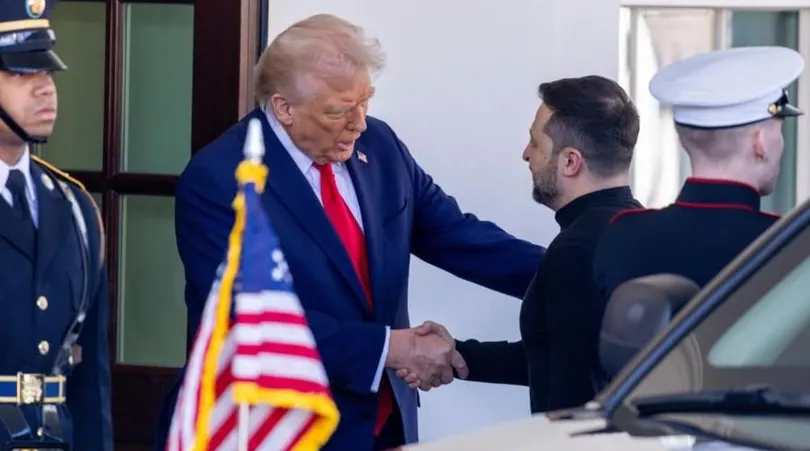U.S. President Donald Trump and Ukrainian President Volodymyr Zelensky met at the White House on February 28, 2025, to finalize a crucial minerals deal amid ongoing geopolitical tensions. The meeting, held as part of Trump’s shifting foreign policy strategy, focused on economic agreements rather than direct military aid for Ukraine.
The U.S.-Ukraine Minerals Deal
One of the most significant outcomes of the meeting was the signing of a major minerals agreement between the U.S. and Ukraine. Under the deal:
The U.S. gains access to Ukraine’s valuable rare earth minerals, oil, and natural gas reserves.
50% of revenue generated from these resources will be allocated to a joint U.S.-Ukraine reconstruction fund.
The agreement is intended to boost Ukraine’s economy as it continues to resist Russian aggression.
Trump’s Position: “For Both Ukraine and Russia”
President Trump took a neutral diplomatic stance, avoiding strong commitments to either side in the ongoing Russia-Ukraine conflict.
“I support both Ukraine and Russia. We want peace, but we must be smart about how we achieve it,” Trump stated during the meeting.
Trump also emphasized that Ukraine should be “grateful” for the aid it has already received from the U.S. but did not confirm any new military assistance.
Zelensky’s Goals: Seeking Stronger U.S. Support
Ukrainian President Zelensky came into the meeting hoping to secure more military aid and security guarantees.
He urged the U.S. to increase military assistance to help Ukraine defend itself against ongoing Russian attacks.
He stressed that any future peace negotiations must involve Ukraine directly, rejecting Trump’s previous suggestion that the U.S. could broker a deal independently.
While the minerals deal will provide Ukraine with economic relief, Zelensky did not receive clear assurances on additional military aid, leaving many questions about the future of U.S. support.
The Bigger Picture: U.S. Shifts Policy on Ukraine
The Trump administration has indicated a shift in U.S. foreign policy, signaling a reduced military role in European security affairs.
The U.S. has been encouraging Europe to take greater responsibility for supporting Ukraine.
Trump has been reluctant to commit more U.S. funds for military aid, raising concerns among NATO allies.
The minerals deal suggests the U.S. is pivoting toward economic partnerships rather than direct military involvement.
What’s Next?
While the meeting resulted in a significant economic deal, it did not address Ukraine’s urgent security concerns. Zelensky will likely continue seeking alternative sources of military support, while Trump’s approach signals a broader shift in U.S. foreign policy priorities.
As the conflict between Ukraine and Russia continues, the question remains: Will the U.S. maintain strong backing for Ukraine, or is this the beginning of a more hands-off approach?

